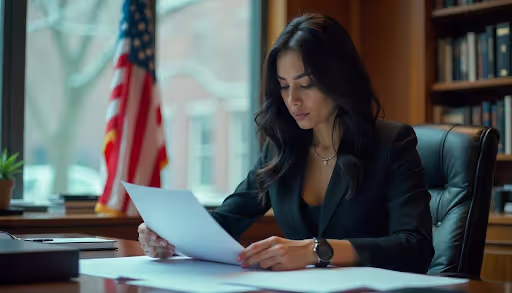
Since the pandemic, U.S. embassies and consulates around the world have been gradually resuming full visa services. However, the return to normal operations has not been consistent. While some locations have made significant progress, others still face considerable delays. The U.S. Department of State has prioritized key categories like family-based green cards, employment-based immigrant visas, and K-1 fiancée visas as part of the recovery effort.
If you're planning to apply for a U.S. visa in the near future, it's important to understand that visa processing timelines can differ dramatically based on the local embassy's operational status. This is where working with experienced immigration professionals such as Beyond Border can help you interpret updates and act accordingly.
To manage the global demand for U.S. visas, consulates have given preference to certain categories. Among these are immigrant visas for family reunification, employment-based green cards, and K-1 fiancée visas. Non-immigrant visas are also being prioritized when tied to urgent or mission-critical needs — especially for students (F-1, M-1), exchange visitors (J-1), and workers with O-1 or H-1B approvals.
Employment-based applicants qualifying under National Interest Exceptions (NIEs) have also seen relatively faster processing. These prioritizations help clear long-standing backlogs but can create challenges for those outside these categories.
One of the most pressing concerns facing visa applicants today is the significant delay in securing interview appointments. The backlog is particularly severe for immigrant visas processed through the National Visa Center (NVC). Even after cases are documentarily qualified, many applicants find themselves waiting months for an appointment due to limited staffing or local restrictions.
This issue is especially frustrating for families trying to reunite or individuals with urgent travel timelines. Proactively checking your case status and embassy-specific updates can help you navigate the uncertainty.
To ease pressure on the system, the U.S. government has expanded the interview waiver program for several non-immigrant visa types. If you’re renewing a visa such as B1/B2 (tourist/business), F (student), H (temporary worker), L (intra-company transfer), or O (extraordinary ability), you may be eligible for a waiver — provided your previous visa was issued after a certain date and there are no red flags like prior denials.
This development allows many individuals to skip the in-person interview entirely, significantly accelerating the application timeline. If you’re unsure whether you qualify, consulting Beyond Border can provide clarity and guidance.
It’s essential to understand that visa operations vary widely by embassy and consulate. Local COVID-related health guidelines, country-specific regulations, staffing shortages, and high volumes of pending cases can all affect how quickly your application is processed.
Some embassies have resumed nearly full services, while others only offer limited appointments or emergency services. For the most reliable updates, always check the official website of the U.S. embassy or consulate in your country.
Applying for a U.S. visa in today’s environment requires patience, planning, and adaptability. Start early, gather all required documents in advance, and monitor your embassy’s updates frequently. If you're eligible for an interview waiver or qualify under a prioritized category, you may find your process moves faster than expected.
In uncertain times, having expert support can make a significant difference. Whether you’re pursuing a green card, work visa, or travel permit, the experienced team at Beyond Border can help you navigate these complexities with confidence.